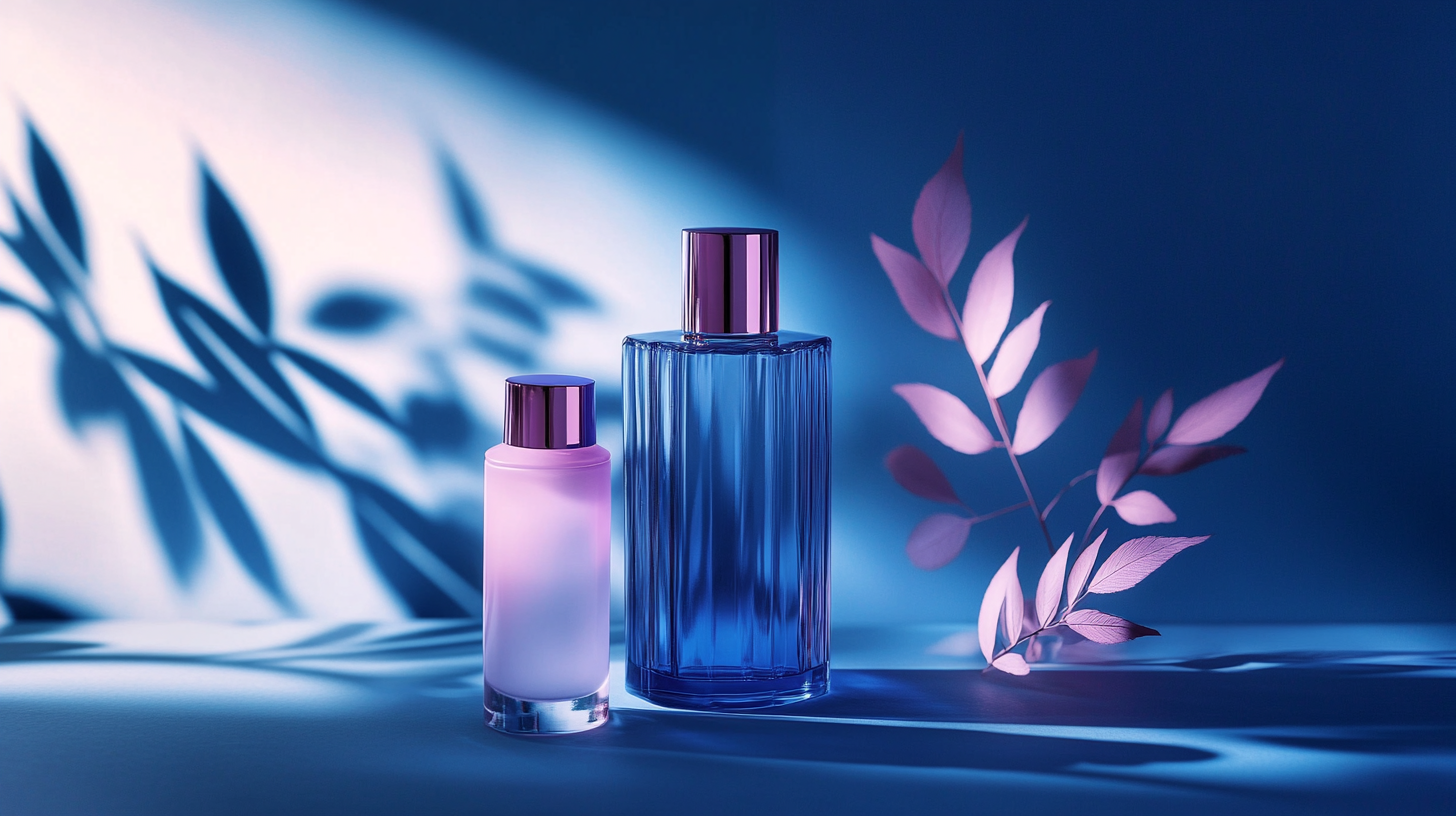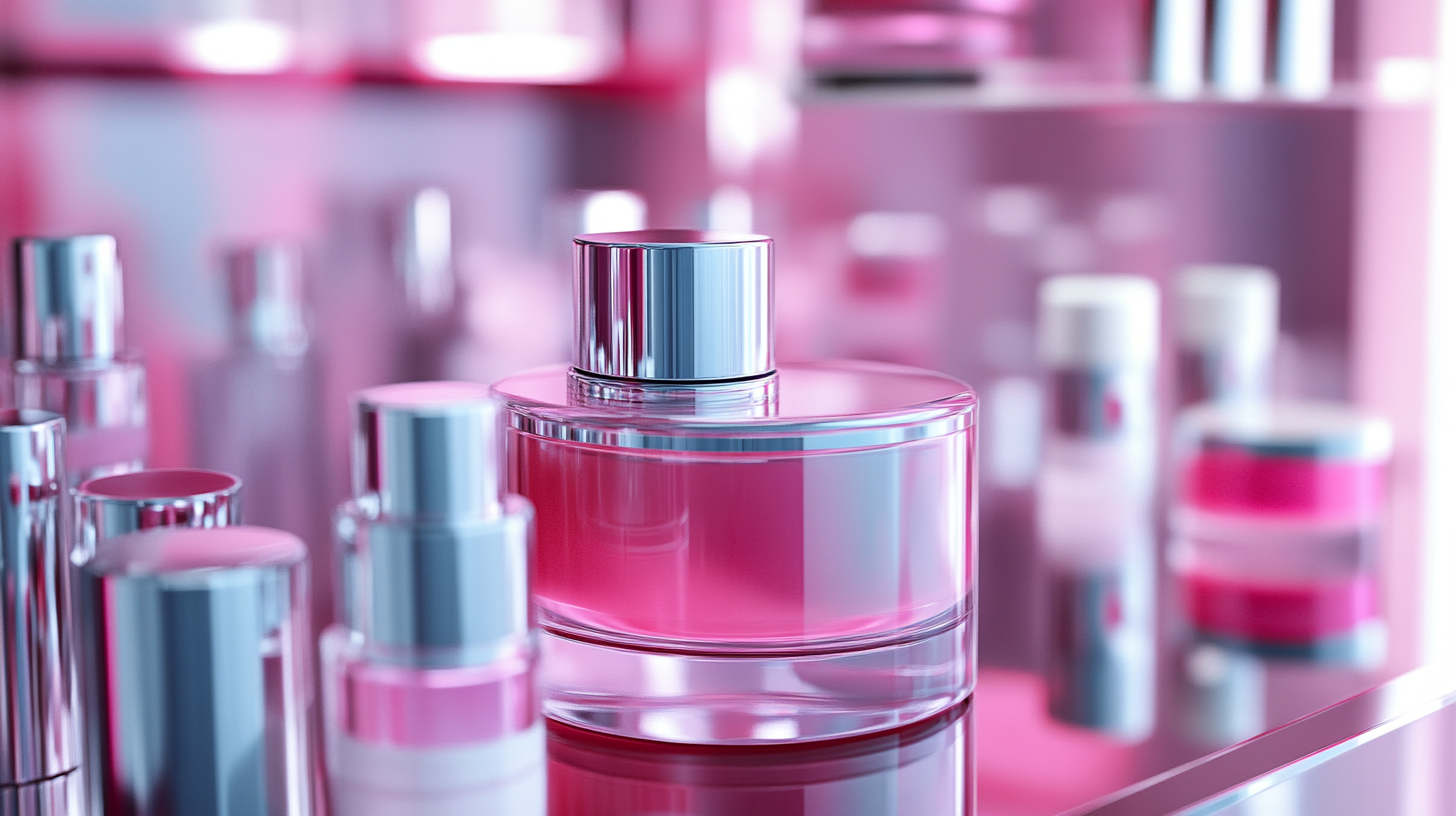Empowering Global Buyers with Top Quality Cosmetic Bottles from Leading Chinese Manufacturers
In the rapidly evolving beauty industry, the demand for high-quality cosmetic bottles is at an all-time high, with the cosmetic packaging market projected to reach USD 43.4 billion by 2027, according to a recent report by Grand View Research. As global buyers seek to enhance their product offerings, finding reliable suppliers becomes critical. Leading Chinese manufacturers have emerged as key players in this space, offering innovative, sustainable, and aesthetically pleasing solutions that cater to diverse consumer needs. However, navigating the vast landscape of suppliers can be challenging.

This blog will guide you through essential strategies for identifying top-quality sources for cosmetic bottles, along with a comprehensive checklist to streamline your selection process. This empowers businesses to make informed decisions and create impactful products that resonate with consumers worldwide.
The Importance of Import and Export Certifications in the Cosmetic Bottle Industry
In the rapidly evolving cosmetic bottle industry, import and export certifications play a crucial role in ensuring product safety and compliance with international standards. According to a report by Research and Markets, the global cosmetic packaging market is expected to reach $35 billion by 2024, driven by the increasing demand for innovative and sustainable packaging solutions. For manufacturers, obtaining relevant certifications, such as ISO and GMP, is not just a regulatory requirement but also a competitive advantage. These certifications signal product quality and reliability to global buyers, fostering trust and encouraging market entry.
Furthermore, the significance of certifications extends beyond compliance; they directly impact a manufacturer's ability to penetrate diverse markets. A study published by the International Trade Centre highlights that products with recognized certifications are 30% more likely to be accepted by buyers in developed countries. This statistic underscores the necessity for Chinese manufacturers to pursue high standards in product quality and safety to capitalize on global opportunities. Thus, as the cosmetic bottle market continues to expand, investment in quality certifications will be paramount for manufacturers aiming to empower global buyers and secure their place in this lucrative industry.

Key Trends and Innovations in Cosmetic Bottle Manufacturing: A Data-Driven Overview
The cosmetic bottle manufacturing industry is experiencing transformative trends fueled by innovation and consumer demands, particularly in the realm of personalization. As the global market for skin lightening products is projected to grow significantly, manufacturers are increasingly focusing on creating cosmetic bottles that cater to diverse customer preferences. This shift toward personalization not only allows brands to resonate with their target audience but also enhances customer loyalty, ensuring a competitive edge in a crowded marketplace.
Moreover, the rise of e-commerce and digital marketing strategies has pressed manufacturers to adopt sustainable and eye-catching packaging designs. The post-pandemic era has seen small-size cosmetic and fragrance samples play a pivotal role, allowing brands to showcase their products in a more engaging manner. As consumers seek authenticity and connection with brands, manufacturers who prioritize innovative design and eco-friendliness in their cosmetic bottles will thrive in this evolving landscape, reflecting industry-wide advancements and preferences.
Empowering Global Buyers with Top Quality Cosmetic Bottles from Leading Chinese Manufacturers
| Dimension | Value |
|---|---|
| Types of Materials | Glass, PET, PP, PCR |
| Average Bottle Size | 30ml to 300ml |
| Sustainability Practices | Recyclable Materials, Biodegradable Options |
| Customization Options | Colors, Shapes, Labels, Caps |
| Key Trends | Minimalism, Eco-Friendly Packaging |
| Market Growth Rate (2022-2027) | 5.8% CAGR |
| Primary Export Markets | North America, Europe, Asia-Pacific |
How Leading Chinese Manufacturers Maintain Quality Standards for Global Buyers
In the competitive landscape of cosmetic packaging, maintaining quality standards is paramount for leading Chinese manufacturers who aim to empower global buyers. These manufacturers employ stringent quality control processes at every stage of production, ensuring that the cosmetic bottles not only meet aesthetic demands but also adhere to functional performance and safety regulations. This dedication to high standards helps to build trust with international clients, alleviating concerns about product quality.
Tip: When selecting a manufacturer, it is essential to inquire about their quality assurance protocols. Look for certifications such as ISO or other relevant industry standards, which are indicators of reliable quality management systems.
Moreover, many manufacturers leverage advanced technology and automated systems to optimize their production processes. This not only enhances the consistency of the cosmetic bottles but also reduces the likelihood of defects. Regular inspections and third-party audits further ensure that the products remain in line with global expectations.
Tip: Always request samples before placing large orders. Evaluating samples can give insight into the manufacturer’s quality and help you gauge whether their offerings align with your brand’s needs.

The Impact of Sustainable Practices in Cosmetic Bottle Production: Industry Insights
The cosmetic packaging industry is undergoing a significant transformation driven by the increasing demand for sustainable solutions. With the global cosmetic packaging market estimated to reach USD 58.8 billion in 2024 and grow at a CAGR of 4.2% through 2034, manufacturers are actively exploring biodegradable materials. This shift is evident in the burgeoning bamboo packaging market, projected to rise from $531.30 million in 2025 to $827.15 million by 2035. Bamboo's remarkable properties as a durable and eco-friendly alternative to plastic make it a frontrunner for brands looking to embrace sustainable practices.
Tips for brands seeking to enhance sustainability include investing in renewable materials such as bamboo and flax fibers. Additionally, companies can collaborate with innovators in bio-packaging solutions to reduce their environmental footprint. Maintaining transparency in sourcing and production also resonates with today's eco-conscious consumers, particularly in markets like Italy, where green cosmetic trends are gaining traction.
As the global focus on sustainability intensifies, the adoption of water-soluble packaging materials is also on the rise. These versatile materials, like polyvinyl alcohol (PVOH), offer an excellent solution for reducing plastic waste. Brands that prioritize sustainable packaging are not only contributing to environmental preservation but also positioning themselves favorably in a competitive market.
Impact of Sustainable Practices in Cosmetic Bottle Production
This chart illustrates the percentage of cosmetic bottle production using sustainable practices among leading manufacturers based in China. The data shows a positive trend towards sustainability in the industry.
Navigating International Regulations: A Guide for Buyers of Cosmetic Bottles
Navigating international regulations can be a daunting task for global buyers of cosmetic bottles, especially in a landscape where sustainability and recycling are increasingly prioritized. As the demand for high-quality cosmetic packaging escalates, regulations governing the materials and manufacturing processes have become more stringent. Buyers must understand the legal implications of sourcing their products from global manufacturers, particularly those in China, which has established itself as a leading hub for cosmetic packaging solutions.
In a recent report, the burgeoning trend of buying and selling empty cosmetic bottles on secondhand platforms highlights the evolving relationship consumers have with packaging. High-end skincare bottles are now viewed not just as containers but as valuable items worthy of resale. This shift is significant for manufacturers, as it underscores the importance of producing durable, appealing packaging that appeals to environmentally conscious consumers. By understanding both market trends and international regulations, global buyers can make informed decisions that enhance their product offerings while contributing to a more sustainable future in the cosmetic industry.
CONTACT US
|
